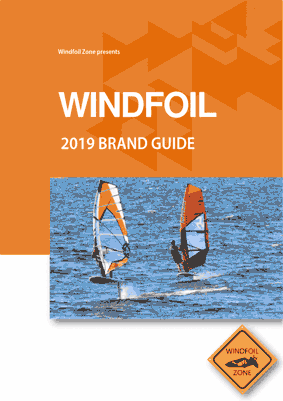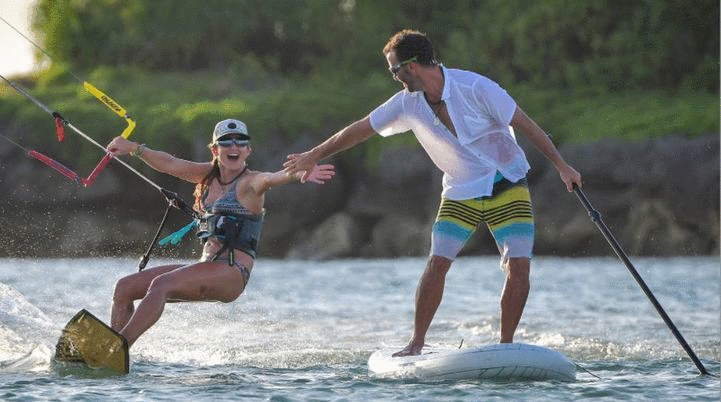Interview with Will Graham, windfoil instructor
- Doug Reid
- May 3, 2019
- 5 min read
Let's meet Will Graham, windsurf and windfoil instructor in Greece. He is sharing his passion for foiling and his experience in recycling an old freestyle board into a freeride winfoil board.

Hi Will, can you give us a quick introduction to yourself and your windsurfing. I'm 24 and started windsurfing four years ago, shortly after starting a job at an outdoor activity centre as a rock climbing instructor. But working with a bunch of overexcited ex-summer seasonaires, I soon decided I wanted to move towards water sports as a career.
After my second year at the centre, I did my dinghy and Start Windsurf instructor qualifications which opened the doors to summer seasons abroad. Two summer seasons down and I am now an Advanced Windsurf and Foiling instructor and about to start my third season working as a private water sports coach in Vassilikki, Greece.

What was your first foil experience? I first foiled last summer while working in Vass. I wasn't sure what to expect at first, however after 30 minutes of crashing, catapulting and scorpioning. Things started to make sense and I realised the beauty of foiling. The feeling of flying two foot above the water in near complete silence is like no other. How long have you been foiling for? As it would happen, the wind in Vass last year was pretty terrible for the second half of the season. Meaning I ended up foiling most days rather than 'fin' surfing. By the time October rolled around and I flew home, I knew I'd have to get some kit of my own so I could carry on through the winter. What attracted you to foiling freestyle? I've never really been a great fan of just blasting back a forth and started watching some of the crazy things people like Balz Müller and Slingshot's brand manager Wyatt Miller where doing on custom built, low volume foil boards. As I'm lucky enough to have a fair knowledge of composites as well as access to a well-stocked man cave, I started designing a board conversion of my own.

Backloop crash!
Tell me about your board and your plans for future boards? Before starting the design process, I spent a couple of weeks researching current foil boards to work out the routes different manufacturers had taken and also tried out as many different foil/board combinations as possible. I decided an older freestyle board would work better for what I planned than a freeride/slalom board. This is partly because I wanted inboard straps with a signal back strap. But also because more volume is distributed towards the tail in freestyle boards, helping with non-planning stability, and also with pumping. Older freestyle boards also have a longer overall length than modern ones, and although I planned to chop the nose off and make the board a stubby.

They have a greater length from the mast track to the straps (and fin box). Which for my own ease, I wanted to be as close to production foil boards as possible, as this measurement can greatly affect how much lift the foil will produce. I bought a 2012 Starboard flare 101 and worked out I had between 90-95cm from the mast track to the fin box (depending on where I mounted it). A lot of foil boards have this gap at around 110cm, although they can be less. By hand measuring this length on 5 different production boards, I was able to work out that JP foil boards had the closest 'vitals' than that of my flare, with this gap being about 100cm. So, I now knew which foil to design my board around. Coincidently the pink Neil Pryde Flight AL foil (designed for JP boards) is not only the cheapest foil on the market also one of the lightest. And being that they don't work very well in boards they're not designed for, it also meant I could pick up a second hand one pretty cheap. Win win! Researching other conversion projects, I've noticed that a lot of people just cut out the old fin box and stick a deep tuttle box in, maybe re-enforcing the local area but with very little consideration for the increased strain on the rest of board.

Making my foil box from scratch meant I was able to build in an integrated wishbone that runs under the foot straps and links in with the rails of the board to direct more load to the board as a whole. Sailing my creation for the first time, I was surprised at how nicely it sailed with inboard straps. As I predicted the lack of leverage over the foil would make it difficult to control. However, the only negative I noticed was when it came to gybing which is much more difficult than on a freeride foil board. My 'Fl-air' has taken on a bit of a franken-board look, being of more of a working prototype than a finished product. But now I know the concept works I plan to make a 90-95 litre version which will hopefully be a bit prettier. What is your current foiling goal? I've been going for foiling Switch Konos, back loops, front loops and boomerangs with varying degrees of success- I'm definitely no Balz Müller yet!
But more recently started foiling at Avon Beach, my local wave spot, to experiment with wave foiling. Having a single back strap on my board means that you can bottom and top turn more easily while keeping both feet in the straps.
However, although the waves that day were only around 2-3 foot it still required every ounce of skill I had to ride the wave with some degree of control! The whole experience was totally mind-blowing and the most fun I've ever had on a board! So I want to see how far I can push my set up and myself in unconventional foiling conditions.

Windfoiling in small waves
What is your ambition for foiling?
I don't know if I have an ambition for foiling as such. I like the idea of showing people that any average Joe can have fun on a foil and play in exciting conditions. Maybe one day there will be as many foilists out storm sailing as 'fin' surfers? What move would you suggest for the average freeride foiler to try? Get jumping!
It's so much fun. And as long as you don't let go of the boom there's not too much that can go wrong. :D Any last thoughts? If anyone is planning a project and had questions, don't hesitate to contact me.
My instagram profile is @willgraham262









Comments